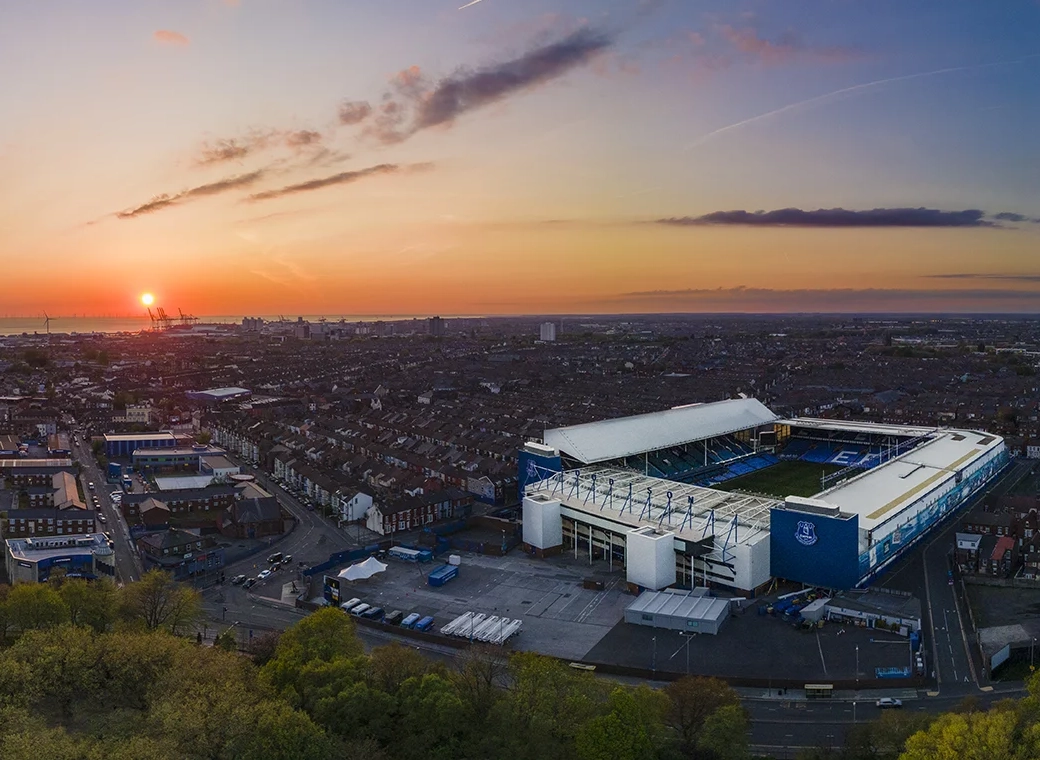davek
Player Valuation: £150m
https://www.theguardian.com/football/blog/2016/nov/12/premier-league-key-trends-of-season-so-far
1 Pressing
A few years ago possession was the most discussed concept in football. Since then there has been a shift from a possession-based approach and more attention paid to pressing. Mauricio Pochettino’s Southampton and Tottenham sides pressed in advanced positions to win the ball quickly, Klopp popularised counter-pressing, winning the ball immediately after it has been lost, and Guardiola also emphasises the importance of closing down in advanced positions.
Matches involving these sides have been frantic. Tottenham’s 2-0 victory over Manchester City was notable as a contest where the sides were determined to shut one another down, and in their 1-1 draw at Arsenal last weekend both teams were more focused on disrupting the other side’s play than on playing incisive passing combinations.
Matches boasting heavy pressing and technical quality can be enthralling but there is a danger Premier League games are becoming too based around spoiling rather than creating.
2 False nines
An impressive start to 2016-17 by Liverpool and Arsenal owes much to the use of unusual centre-forwards.
Roberto Firmino arrived in English football two summers ago as an attacking midfielder, set to provide Christian Benteke and Daniel Sturridge with service. But Jürgen Klopp sold Benteke, has not taken to Sturridge and has used Firmino as Liverpool’s regular No9. The Brazilian is a different beast: more dynamic, more selfless, better at starting the press and increasingly a goalscorer too.
Arsenal, similarly, have deployed Alexis Sánchez up front. Although the Chilean was sometimes used in that position upon his arrival in 2014, he spent the past two seasons as an attacking midfielder, generally starting from the left. But Arsène Wenger’s use of Sánchez up front has provided another dimension to Arsenal’s attack – he stretches the play more than Olivier Giroud, drops deep to link play cleverly and demonstrated traditional centre-forward skills with a powerful headed goal against Sunderland.
3 Three-man defences
Antonio Conte achieved great success with Juventus by deploying a three-man defence, a system he replicated with Italy. When Chelsea struggled with the 4-1-4-1 shape Conte used at the start of the season, the solution was obvious – switch to a back three.
Initially trialled when Chelsea were 3-0 down at the Emirates with little hope of a comeback, Conte has used a 3-4-3 in Chelsea’s subsequent five league games, with an aggregate score of 16-0. Eden Hazard is freed from defensive responsibilities, David Luiz can operate as a spare man and Marco Alonso’s purchase makes sense, as he is a natural wing-back.
Last weekend two sides followed suit: Ronald Koeman surprisingly attempted to match Chelsea’s system at Stamford Bridge, although this backfired spectacularly with a 5-0 defeat. Tottenham also utilised a three-man defence the following day in a 1-1 draw at Arsenal. With Pep Guardiola’s Manchester City sometimes subtly shifting into a three-man defence, that system has been more visible than usual.
4 Set-piece goals
This season there has been a concerted effort by officials to clamp down on shirt-pulling by defenders at set pieces. This appears to have particularly affected some teams. Last season’s champions Leicester City, whose centre-backs Robert Huth and Wes Morgan were somewhat reliant on grappling when defending set pieces, have found themselves penalised for that behaviour.
“They have changed the rules and it’s something we have to learn to adapt to as players,” said the Leicester defender Danny Simpson, shortly after they conceded three goals from set pieces at Manchester United. “The way it was last season, I thought we were very good at defending set pieces and we made it tough for the opponents. You have been doing that all your career and suddenly you’ve got to change – but it’s the same for everyone.” Across the league, there have been 0.65 set-piece goals per game, up from 0.59 last season.
5 Fewer free roles
Advertisement
Overall, the Premier League’s top sides feel particularly structured and systemised this season, thanks to the appointment of managers with very strict philosophies. Playmakers who like playing in a free role have found themselves in stricter roles, or out of the team.
The most obvious loser has been Cesc Fàbregas, the league’s most creative midfielder two seasons ago but a player who required freedom from tactical responsibilities to thrive. Conte cannot find a place for him and the Spaniard has started only one league game.
Elsewhere, Kevin De Bruyne and David Silva have continued as Manchester City regulars but in much deeper, more disciplined roles than they have been accustomed to, and Adam Lallana has been excellent at Liverpool – again, with stricter positional instructions. Henrikh Mkhitaryan cannot get a look-in at Manchester United, however, which arguably leaves Arsenal’s Mesut Özil as the only top-level No10 allowed freedom to drift where he pleases.
Fair comment or tosh?
1 Pressing
A few years ago possession was the most discussed concept in football. Since then there has been a shift from a possession-based approach and more attention paid to pressing. Mauricio Pochettino’s Southampton and Tottenham sides pressed in advanced positions to win the ball quickly, Klopp popularised counter-pressing, winning the ball immediately after it has been lost, and Guardiola also emphasises the importance of closing down in advanced positions.
Matches involving these sides have been frantic. Tottenham’s 2-0 victory over Manchester City was notable as a contest where the sides were determined to shut one another down, and in their 1-1 draw at Arsenal last weekend both teams were more focused on disrupting the other side’s play than on playing incisive passing combinations.
Matches boasting heavy pressing and technical quality can be enthralling but there is a danger Premier League games are becoming too based around spoiling rather than creating.
2 False nines
An impressive start to 2016-17 by Liverpool and Arsenal owes much to the use of unusual centre-forwards.
Roberto Firmino arrived in English football two summers ago as an attacking midfielder, set to provide Christian Benteke and Daniel Sturridge with service. But Jürgen Klopp sold Benteke, has not taken to Sturridge and has used Firmino as Liverpool’s regular No9. The Brazilian is a different beast: more dynamic, more selfless, better at starting the press and increasingly a goalscorer too.
Arsenal, similarly, have deployed Alexis Sánchez up front. Although the Chilean was sometimes used in that position upon his arrival in 2014, he spent the past two seasons as an attacking midfielder, generally starting from the left. But Arsène Wenger’s use of Sánchez up front has provided another dimension to Arsenal’s attack – he stretches the play more than Olivier Giroud, drops deep to link play cleverly and demonstrated traditional centre-forward skills with a powerful headed goal against Sunderland.
3 Three-man defences
Antonio Conte achieved great success with Juventus by deploying a three-man defence, a system he replicated with Italy. When Chelsea struggled with the 4-1-4-1 shape Conte used at the start of the season, the solution was obvious – switch to a back three.
Initially trialled when Chelsea were 3-0 down at the Emirates with little hope of a comeback, Conte has used a 3-4-3 in Chelsea’s subsequent five league games, with an aggregate score of 16-0. Eden Hazard is freed from defensive responsibilities, David Luiz can operate as a spare man and Marco Alonso’s purchase makes sense, as he is a natural wing-back.
Last weekend two sides followed suit: Ronald Koeman surprisingly attempted to match Chelsea’s system at Stamford Bridge, although this backfired spectacularly with a 5-0 defeat. Tottenham also utilised a three-man defence the following day in a 1-1 draw at Arsenal. With Pep Guardiola’s Manchester City sometimes subtly shifting into a three-man defence, that system has been more visible than usual.
4 Set-piece goals
This season there has been a concerted effort by officials to clamp down on shirt-pulling by defenders at set pieces. This appears to have particularly affected some teams. Last season’s champions Leicester City, whose centre-backs Robert Huth and Wes Morgan were somewhat reliant on grappling when defending set pieces, have found themselves penalised for that behaviour.
“They have changed the rules and it’s something we have to learn to adapt to as players,” said the Leicester defender Danny Simpson, shortly after they conceded three goals from set pieces at Manchester United. “The way it was last season, I thought we were very good at defending set pieces and we made it tough for the opponents. You have been doing that all your career and suddenly you’ve got to change – but it’s the same for everyone.” Across the league, there have been 0.65 set-piece goals per game, up from 0.59 last season.
5 Fewer free roles
Advertisement
Overall, the Premier League’s top sides feel particularly structured and systemised this season, thanks to the appointment of managers with very strict philosophies. Playmakers who like playing in a free role have found themselves in stricter roles, or out of the team.
The most obvious loser has been Cesc Fàbregas, the league’s most creative midfielder two seasons ago but a player who required freedom from tactical responsibilities to thrive. Conte cannot find a place for him and the Spaniard has started only one league game.
Elsewhere, Kevin De Bruyne and David Silva have continued as Manchester City regulars but in much deeper, more disciplined roles than they have been accustomed to, and Adam Lallana has been excellent at Liverpool – again, with stricter positional instructions. Henrikh Mkhitaryan cannot get a look-in at Manchester United, however, which arguably leaves Arsenal’s Mesut Özil as the only top-level No10 allowed freedom to drift where he pleases.
Fair comment or tosh?










